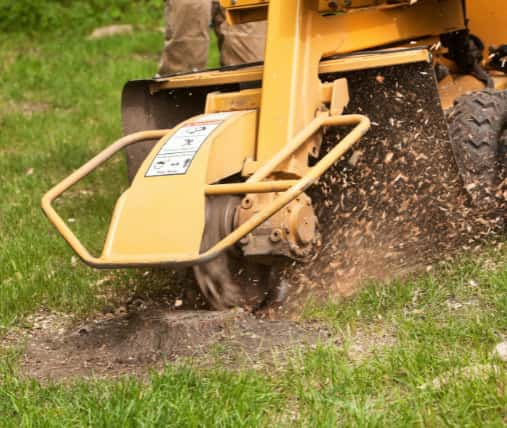Old and heritage trees are not just a natural feature; they are an essential part of our environment, history, and landscape. Whether standing in a public park or in a private garden, these trees are often seen as living monuments that reflect the history of the area. Due to their age, size, and importance, maintaining these trees is crucial to preserving their health, safety, and aesthetic value. One way to achieve this is through professional tree surgery. But how effective is tree surgery when it comes to preserving old or heritage trees? Let’s explore the topic in detail.
The Role of Tree Surgery in Maintaining Older Trees
Tree surgery involves the pruning, cutting, and caring of trees to enhance their health and safety, and it plays an essential role in the care of older or heritage trees. While these trees may require more delicate handling due to their age and historical significance, tree surgery techniques can still help extend their life and protect them from potential hazards.
1. Promoting Tree Health
Old trees often face challenges such as disease, decay, or pest infestations that may not be immediately obvious to the untrained eye. Tree surgery professionals are equipped with the knowledge and tools to assess and treat these problems early on. They can identify signs of disease, such as fungal growth or the presence of pests, and take corrective action to treat the tree and prevent further damage.
By removing deadwood, cutting back overgrown branches, and addressing diseases, tree surgery helps ensure that the tree remains as healthy as possible. Regular maintenance can extend the life of a tree, even if it is centuries old.
2. Improving Structural Integrity
As trees age, they can develop structural weaknesses. For example, a large, mature tree may develop limbs that are too heavy for the trunk, or branches that lean excessively in one direction. Such structural problems can cause the tree to become unstable, posing a risk to people and property.
Tree surgery can be used to remove or trim these unstable branches and re-balance the tree. This helps to maintain the overall structure and integrity of the tree, ensuring it can withstand heavy winds, storms, or other external forces. A well-maintained heritage tree is less likely to suffer from breakage or collapse.
3. Enhancing Aesthetic Value
In addition to health and safety benefits, tree surgery can enhance the visual appeal of heritage trees. Overgrown or unbalanced branches can detract from the tree’s aesthetic beauty. By carefully shaping the tree and removing unwanted growth, tree surgery can restore the natural form of the tree while preserving its unique characteristics.
Caring for heritage trees also involves managing their appearance to suit the surrounding landscape. For example, trimming the canopy or reducing the size of certain branches may be necessary to ensure the tree remains in proportion to its surroundings.
How Tree Surgery Helps with Preservation
Preserving heritage trees requires a unique set of skills and a deep understanding of the tree’s history and significance. Tree surgeons can employ various techniques to ensure the longevity of the tree, from gentle pruning to more advanced care methods.
1. Crown Reduction
Crown reduction involves selectively removing a portion of the tree’s canopy. This is particularly useful for older trees that have grown too large or whose branches pose a risk. By reducing the size of the tree’s crown, tree surgeons help balance the tree’s structure and improve light penetration to the lower parts of the tree.
This technique can also help mitigate the effects of strong winds by reducing wind resistance. Crown reduction is often carried out on heritage trees to preserve their size and shape while improving their stability.
2. Pollarding
Pollarding is an ancient tree care technique where the upper branches and stems are cut back to promote new growth. This method can be used to rejuvenate old trees, giving them a new lease of life. Pollarding can also help control the size of the tree, making it safer and more manageable.
While pollarding is a more extreme form of tree surgery, it is effective in revitalising older trees that have stopped growing. This technique is often applied to trees in historic landscapes and gardens where preserving the tree’s form is crucial.
3. Root Management
The roots of a tree are just as important as its branches and trunk when it comes to overall health. For older trees, managing the roots is key to ensuring the tree remains stable and nourished. Tree surgery can include root pruning, which involves trimming back overgrown or damaged roots, allowing the tree to take in more nutrients from the soil.
Tree surgeons can also address soil compaction around the tree, which can prevent the roots from growing properly. By improving the conditions around the tree’s roots, tree surgery helps ensure that the tree stays healthy and continues to thrive.
Conclusion: Preserving Heritage Trees with Professional Care
Tree surgery is a valuable tool for preserving the health, safety, and aesthetic value of old and heritage trees. While these trees may have unique needs due to their age, careful tree surgery can extend their life, improve their stability, and ensure they continue to be a valued part of our landscapes. Whether through crown reduction, pollarding, or root management, tree surgeons can provide expert care that helps preserve these living monuments for future generations.
If you have a heritage tree or an older tree on your property in need of professional care, don’t hesitate to get in touch with LM Tree Surgery Portchester. Our team of skilled arborists has the expertise to help maintain and preserve your trees, ensuring they continue to flourish for years to come. Contact us today to learn more about our tree surgery services and how we can help protect your valuable trees.
Call us on: 023 8235 6058
Click here to find out more about LM Tree Surgery Portchester
Click here to complete our contact form and see how we can help with your tree needs.

